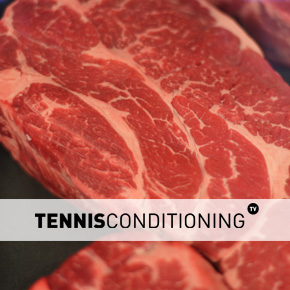What is glycogen? It is the storage form of glucose and it’s being stored in the liver and in muscle cells and can be broken down quickly to provide energy!
What is Glycogen?
The storage form of glucose in the body is glycogen, which is a complex carbohydrate (polysaccharide) stored in animal tissue, and it is being stored in the liver and in muscle tissue.
Glycogenolysis
During exercise, muscle cells break down glycogen stores into glucose, called glycogenolysis. It occurs not only in muscle cells but also in the liver.
During glycogenolysis the liver releases glucose into the blood stream so that cells then can absorb the glucose and thus have the energy to do work.
The liver stores about 1/3 of the body’s total glycogen capacity and releases glucose into the bloodstream as needed.
Synthesis of Glycogen & Blood Glucose Levels

After a meal, when the blood glucose level rises, the liver synthesizes glycogen by attaching short glucose molecules into longer, branching glucose chains (glycogen) via condensation reactions.
When the blood glucose level falls below normal ranges (70 – 110 mg/dL) then the liver breaks it down (glycogenolysis) into single glucose molecules by means of hydrolysis.
Liver stores are being depleted within 90-180 minutes of work, not days!
Muscle cells have 2/3 of total body glycogen storage capacity but they can’t break down the glycogen and transport it to another location (only the liver can do it).
Muscle cells have to use their its stores for themselves during exercise!
Also, glycogen holds water and thus is rather bulky, which is one of the reasons why low carbohydrate diets show quick drops in weight, but it’s water weight because less glycogen is being stored. It’s not fat that’s being lost.
Excess glucose that couldn’t be stored in the form of glycogen will be broken into smaller compounds in the liver.
The liver breaks down glucose in smaller molecules and puts them together in the form of fat.
Then the fat is being transported from the liver and stored in fatty tissues in the body.
Related Sports Nutrition Articles
Training Zone
In this section we provide you with some training tips you may be interested in to optimize your training:




